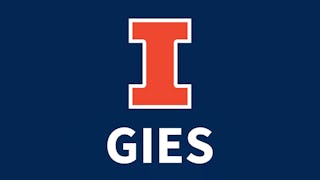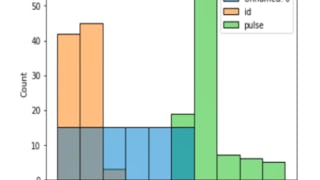Exploratory analytics is where data meets discovery, revealing hidden patterns and turning raw information into breakthrough insights. In this course we will first provide an overview of exploratory analytics methods such as clustering, association rule mining, anomaly detection, and study their business use cases. We will then consider a case study to learn how to use a design sprint framework to ideate about exploratory analytics project plan.


Exploratory Analytics Project Ideation
This course is part of Analytics Project Ideation Specialization

Instructor: Soumya Sen
Included with
Recommended experience
Skills you'll gain
Details to know

Add to your LinkedIn profile
8 assignments
See how employees at top companies are mastering in-demand skills

Build your subject-matter expertise
- Learn new concepts from industry experts
- Gain a foundational understanding of a subject or tool
- Develop job-relevant skills with hands-on projects
- Earn a shareable career certificate

There are 5 modules in this course
What's included
3 videos
This module delves into exploratory analytics methods, including clustering, anomaly detection, and association rule mining. Students will learn how to group similar data points, identify outliers, and uncover hidden relationships within datasets, leveraging these techniques to gain deeper insights and drive data-driven decisions.
What's included
10 videos3 readings2 assignments
Learn about different business contexts where exploratory analytics have been applied to generate insights from data. Practical examples in this module will reinforce theoretical concepts in exploratory analytics, preparing students to effectively apply these methods in other real-world scenarios.
What's included
9 videos2 readings2 assignments
This module illustrates how to set up a design sprint for exploratory project ideation with team members. The process begins with brainstorming to decompose a complex business process and its needs into clear, actionable data analytics questions using Situation-Complication-Question (SCQ) analysis. These questions are then prioritized and mapped out using an issue tree to ensure a structured approach to problem-solving and to identify the most critical areas for data-driven insights.
What's included
9 videos1 reading2 assignments
In the next step of the design sprint for exploratory project ideation, teams identify desired project outcomes by creating mockups to visualize potential solutions. They then construct a solution approach to map these outcomes to the initial questions by selecting the appropriate exploratory analytics methods and available data, ensuring a structured and data-driven path to achieve the project goals.
What's included
9 videos2 readings2 assignments
Earn a career certificate
Add this credential to your LinkedIn profile, resume, or CV. Share it on social media and in your performance review.
Instructor

Offered by
Explore more from Leadership and Management
 Status: Free Trial
Status: Free TrialUniversity of Illinois Urbana-Champaign
 Status: Free Trial
Status: Free TrialUniversity of Minnesota
 Status: Free Trial
Status: Free TrialJohns Hopkins University
Why people choose Coursera for their career





Open new doors with Coursera Plus
Unlimited access to 10,000+ world-class courses, hands-on projects, and job-ready certificate programs - all included in your subscription
Advance your career with an online degree
Earn a degree from world-class universities - 100% online
Join over 3,400 global companies that choose Coursera for Business
Upskill your employees to excel in the digital economy
Frequently asked questions
To access the course materials, assignments and to earn a Certificate, you will need to purchase the Certificate experience when you enroll in a course. You can try a Free Trial instead, or apply for Financial Aid. The course may offer 'Full Course, No Certificate' instead. This option lets you see all course materials, submit required assessments, and get a final grade. This also means that you will not be able to purchase a Certificate experience.
When you enroll in the course, you get access to all of the courses in the Specialization, and you earn a certificate when you complete the work. Your electronic Certificate will be added to your Accomplishments page - from there, you can print your Certificate or add it to your LinkedIn profile.
Yes. In select learning programs, you can apply for financial aid or a scholarship if you can’t afford the enrollment fee. If fin aid or scholarship is available for your learning program selection, you’ll find a link to apply on the description page.
More questions
Financial aid available,


